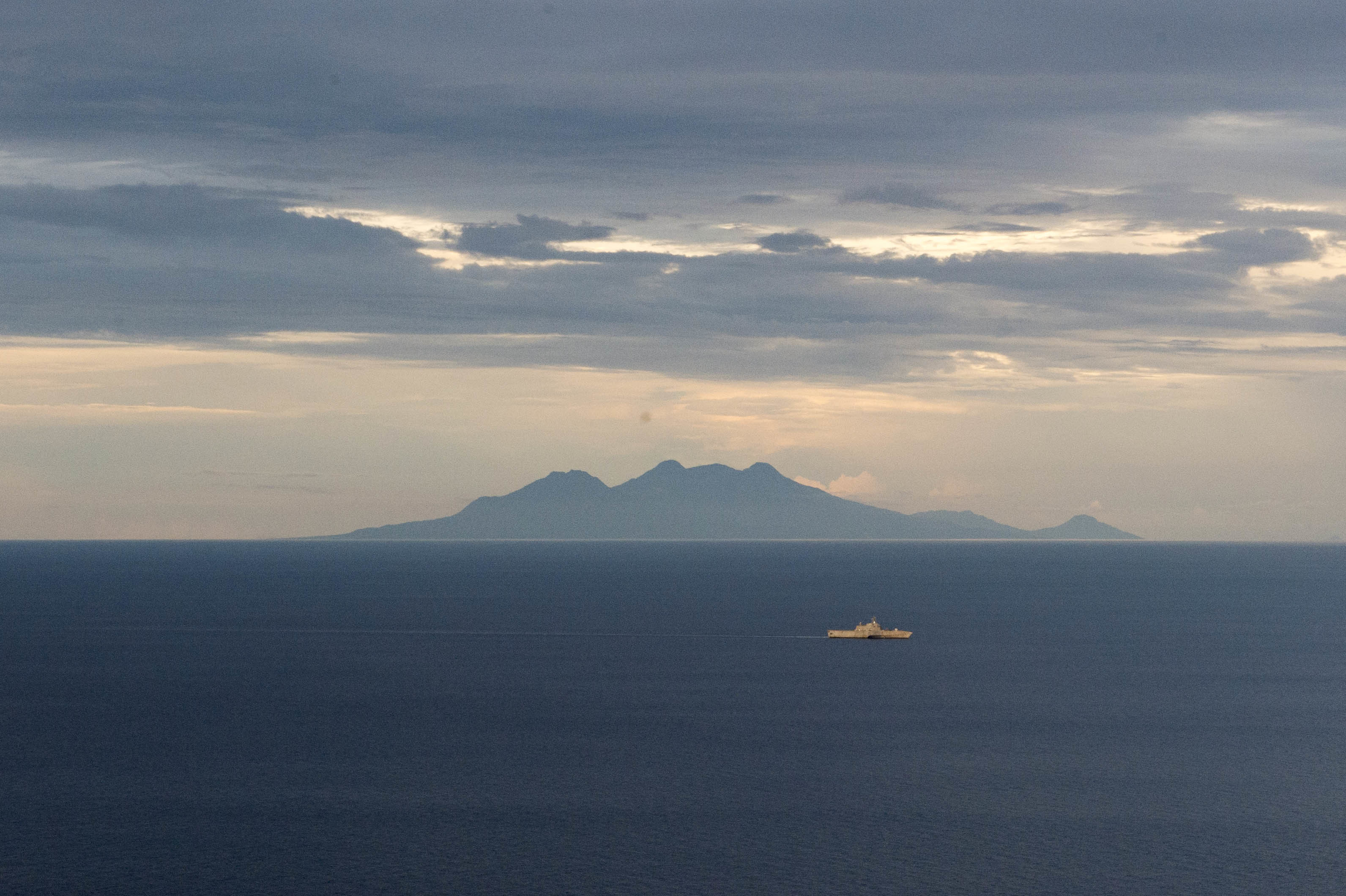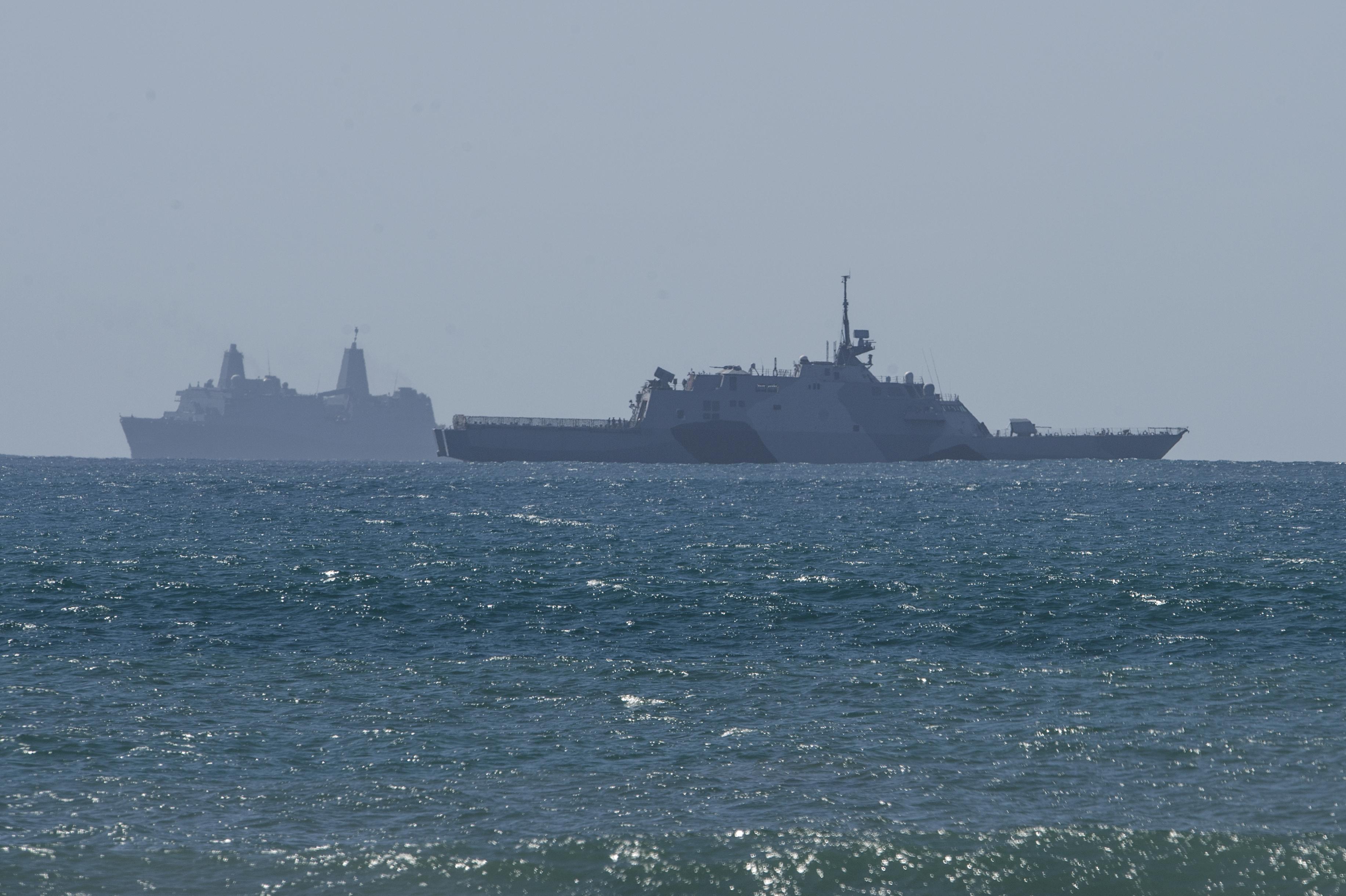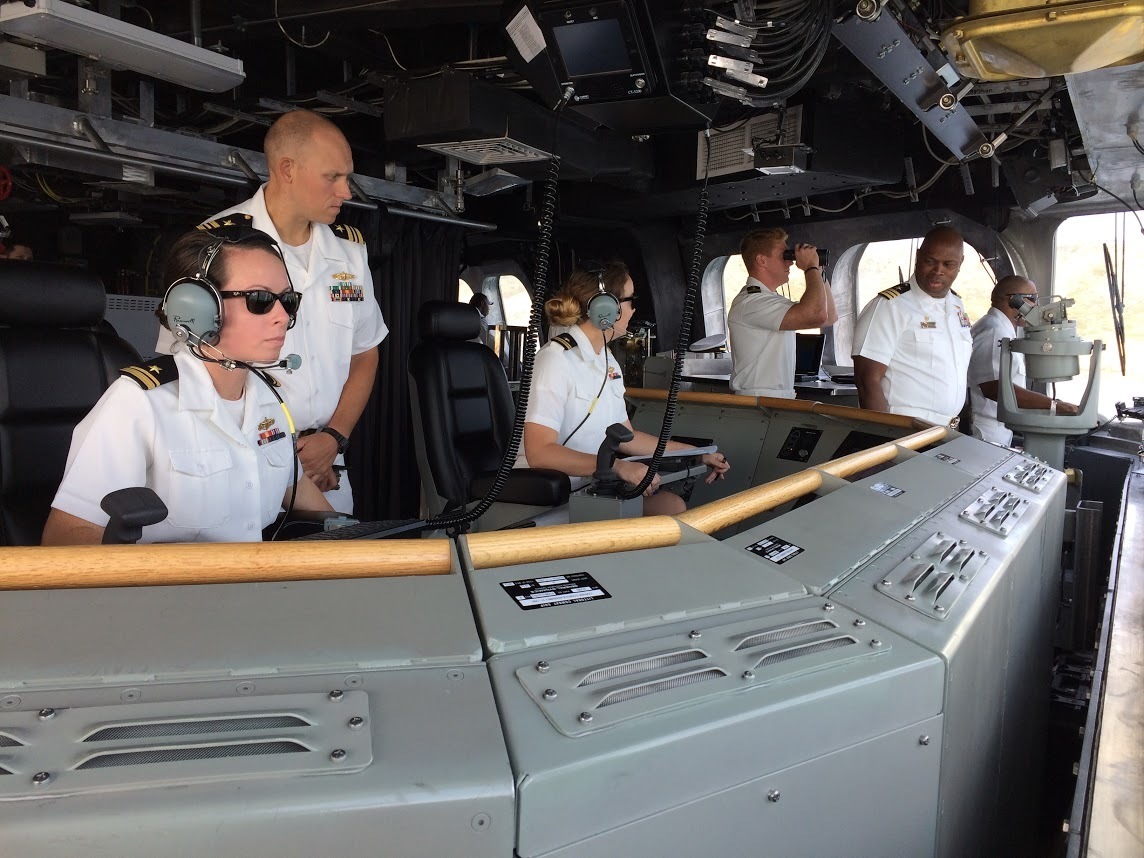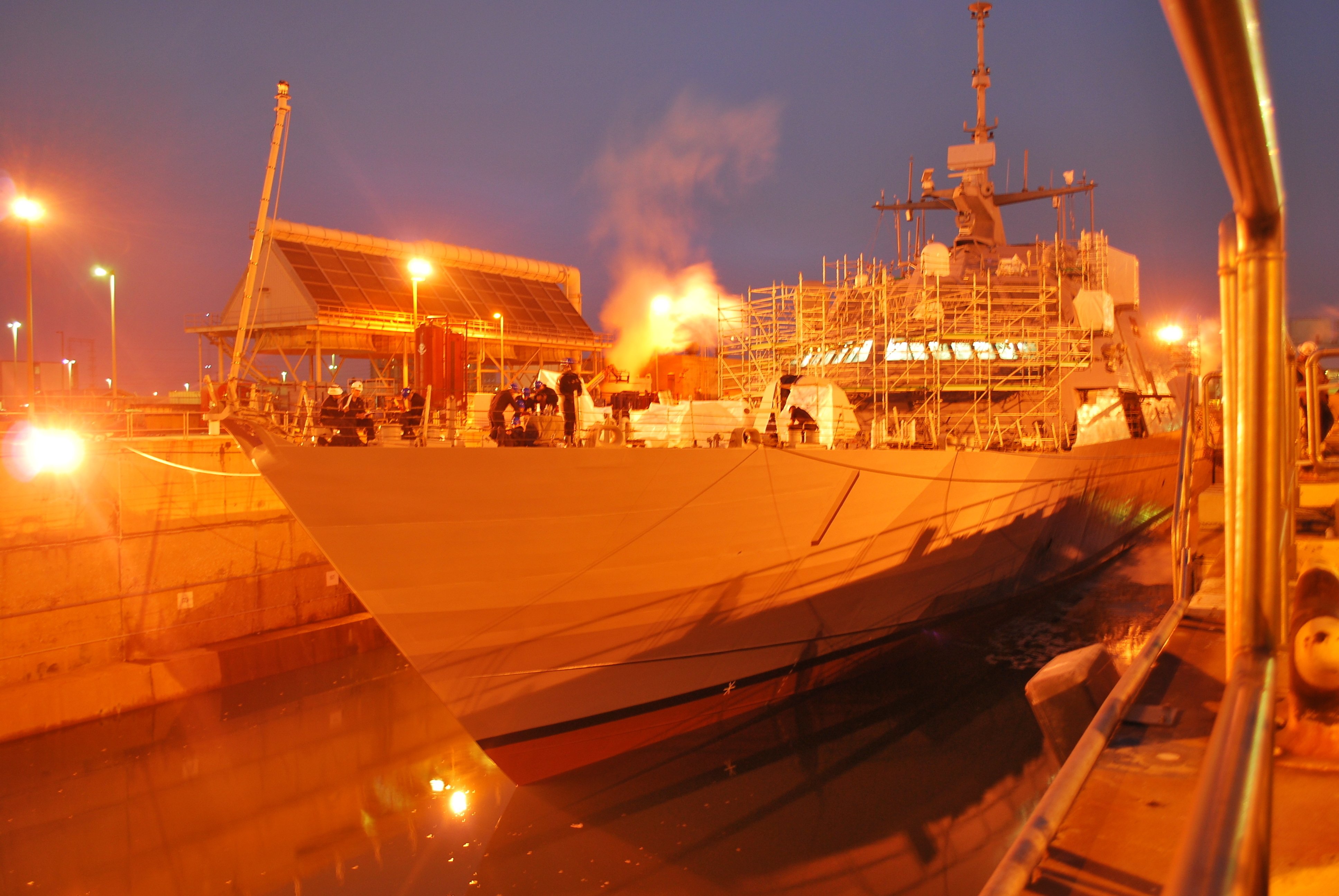
This article is the first in a three-part series on the changes occurring in the Littoral Combat Ship community as the fleet rapidly grows, moves to a new crewing and organizational construct and prepares for multi-ship forward operations.
SAN DIEGO -– The Littoral Combat Ship fleet has spent the last year in the midst of a reorganization and preparing for a new way of doing business following recommendations from a 2016 LCS Review that pointed the Navy towards injecting simplicity, stability and ownership into the unusual program.
A year into implementing those recommendations, the LCS fleet looks vastly different than originally envisioned – and to the benefit of both the program office, the sailors and operational commanders, several officers told USNI News.
Organizational Overhaul

LCS ships will now fall under one of two squadrons: LCSRON-1 in San Diego or LCSRON-2 in Mayport, Fla. LCSRON-1 will eventually have four divisions: a test division, consisting of the first four ships in the class that will focus solely on testing hardware, software and concepts of operations to support bringing new mission module equipment into the fleet; a surface warfare division; a mine countermeasures division; and an anti-submarine division. LCSRON-2 will have three divisions, one for each warfare area. For additional simplicity, aside from the four test division ships, all Austal-built Independence-variant ships will be located in San Diego, and all Lockheed Martin-built Freedom-variant ships will be located in Mayport.
Each division will contain one training ship and three operating ships. For example, LCSRON-1’s surface warfare-focused Division 11, which will be the first warfare-focused division to stand up, will include USS Jackson (LCS-6) as the training ship, and USS Montgomery (LCS-8), USS Gabrielle Giffords (LCS-10) and USS Omaha (LCS-12) as the ships that will operate forward as surface warfare assets.
Compared to a complex old crewing model – where three crews would support two ships, one of which would be operating forward – the test ships and training ships will now be single-crewed, and deployable ships will rotate blue and gold crews.
For the training ships, “what we’re going to do is build a more senior crew with a little more resident LCS expertise so they are able to train and certify the three ships that will each be blue and gold, six crews,” LCSRON-1 commodore Capt. Jordy Harrison told USNI News in a recent visit to Naval Station San Diego, Calif.
Unlike a destroyer squadron commander, Harrison and the LCSRON-1 staff would not deploy to combat as a warfare commander. Rather, his sole job is to make sure crews and ships are ready to deploy, overseeing training, maintenance, manning and certification to deploy.
“We are there to support and assess to make sure the crews are ready to go, the ships are ready to go,” he said.
Maximizing Readiness

Capt. Tom Workman, the LCS Implementation Team leader responsible for putting into practice the ideas that came out of last year’s review, said all the changes being made to the fleet go to support one major priority: increasing operational availability of the ships to fleet commanders around the globe.
“There are many things that were somewhat revolutionary for the Navy in the LCS program as it previously stood: simultaneously we were embarking on a ship class that had two hull variants, interchangeable mission modules, rotational crews, a minimal manning construct, a unique maintenance strategy whereby there was a significant dependence on the materiel and logistics capabilities of the contractors; all of which were somewhat revolutionary at the time combined,” Workman said in an interview at his office at Naval Amphibious Base Coronado.
“One of the things that the review did was to define, among those, what is the number-one priority as we move forward? And clearly the number-one priority was the forward Ao (operational availability) to the operational commander. How can we set the program up to optimize that forward operational availability to the operational commander? And hence, the construct known as blue-gold-plus was born, whereby we have test ships dedicated solely to the [initial operational test and evaluation] requirement of the class from a hardware, software, armament capability, over the life of the class; we have training ships and mission-specific divisions set up on the East Coast and the West Coast … with a training ship in each division dedicated to training the blue and gold teams under that division commander’s cognizance. … And why set up that way? Because that produces the highest Ao forward to the operational commander.”
Workman noted that the new LCS organization focuses on force generation but also allows for a surge if global events required it. Though the scope and time of a cross-training effort hasn’t been determined yet, a ship from the mine countermeasures division could get trained up and deploy as a surface warfare asset to support a major global contingency, he said. Though the ships and crews will be assigned a warfare mission area, the ships will still retain the modularity they were built with, and the mission modules could be swapped out to respond to a crisis. In a real emergency, he added, the division’s training ships could deploy, though it would come at the expense of training follow-on ships, and the test ships could deploy at the expense of testing to support mission package developmental progress.
Harrison praised the new organization as promoting specialized and consistent training standards. With a single crew from a division’s training ship training and certifying all six remaining crews in the divisions, the capabilities of those crews will be much more closely aligned, and lessons brought back from one crew’s deployment can be quickly shared amongst the other crews, he said.
The commodore also noted that the LCS community, both due to the new organization and the rapidly growing number of ships in the fleet, can finally focus on “operational primacy” of the crews. Whereas two years ago there were only four ships that had to balance mission package testing needs and conducting forward deployments to Singapore to prove out the forward operating concept – with little time left over to focus on the proficiency of the new crews being churned out by the Navy – this new organization carves out dedicated test assets to focus on the programmatic milestones, while the rest of the fleet can focus on producing well trained crews that can begin deploying abroad in numbers.
Implementation Obstacles

Though the surface warfare community widely agrees these changes are for the better, they come with a cost. The former crewing model would have called for six crews per four ships, whereas this new model requires seven. The new model also includes additional personnel on the squadron staff to assist ship crews in their quest to take on more maintenance themselves.
Some changes are beginning to take place on the waterfront today, but the funding for the wholesale reorganization won’t come until Fiscal Year 2019, if the surface navy can successfully make their case to the Pentagon and to Congress.
“What’s that program going to look like in its end state, when all of the ships are delivered, all of the mission packages are delivered, all the crews are delivered?” Workman said is driving question in ongoing Program Objective Memorandum (POM) 2019 discussion.
“The ultimate approval of those POM issues, the ultimate deliberations on those and the ultimate delivery of what’s approved, there’s a time lag. So how do we proceed with the program during that intermediate period? What are the bridging strategies that we put in place to start achieving that goal of forward Ao before that extra manpower shows up? That’s what we’re doing now. Things like setting up the missions, functions and tasks that those divisions will adhere to as they stand up. Starting to rewrite the LCS training manual to accommodate that new architecture and that new strategy relative to how we had the training manual set up previously. With a blue and gold construct, with maximizing operational availability forward as the number-one goal, we will re-look at how we train, how we certify and how we sustain in each of the LCS warfare mission areas, and we’ll do it on a blue/gold basis. When that blue crew is deployed, what is that gold crew doing to sustain the proficiency in the areas in which they’re already certified? I think there’s a couple of distinct benefits to that for the operational commander. Not only does the operational commander get the platform forward for an extended period of time and get rotational crews, but within those rotational crews essentially the same crew that was there five to six months ago comes back and brings their familiarity with that operating area back to the tactical benefit of the operational commander, and they come back certified. That renders a level of LCS readiness that we don’t have in any of our other ship classes. Getting ourselves as best toward that construct as we can, even in advance of that manpower arriving from the POM issue.”
Workman said the surface warfare directorate at the Pentagon has been very supporting of finding the money needed to take early steps towards that vision now, ahead of the 2019 funding.
He cautioned, “as the POM ‘19 process unfolds at the Navy-wide level, at the [Office of the Secretary of Defense] level, we will like any other program, we will need to defend those issues. But I think those issues compete very well against the other Navy priorities and then ultimately against the other DoD priorities.”





